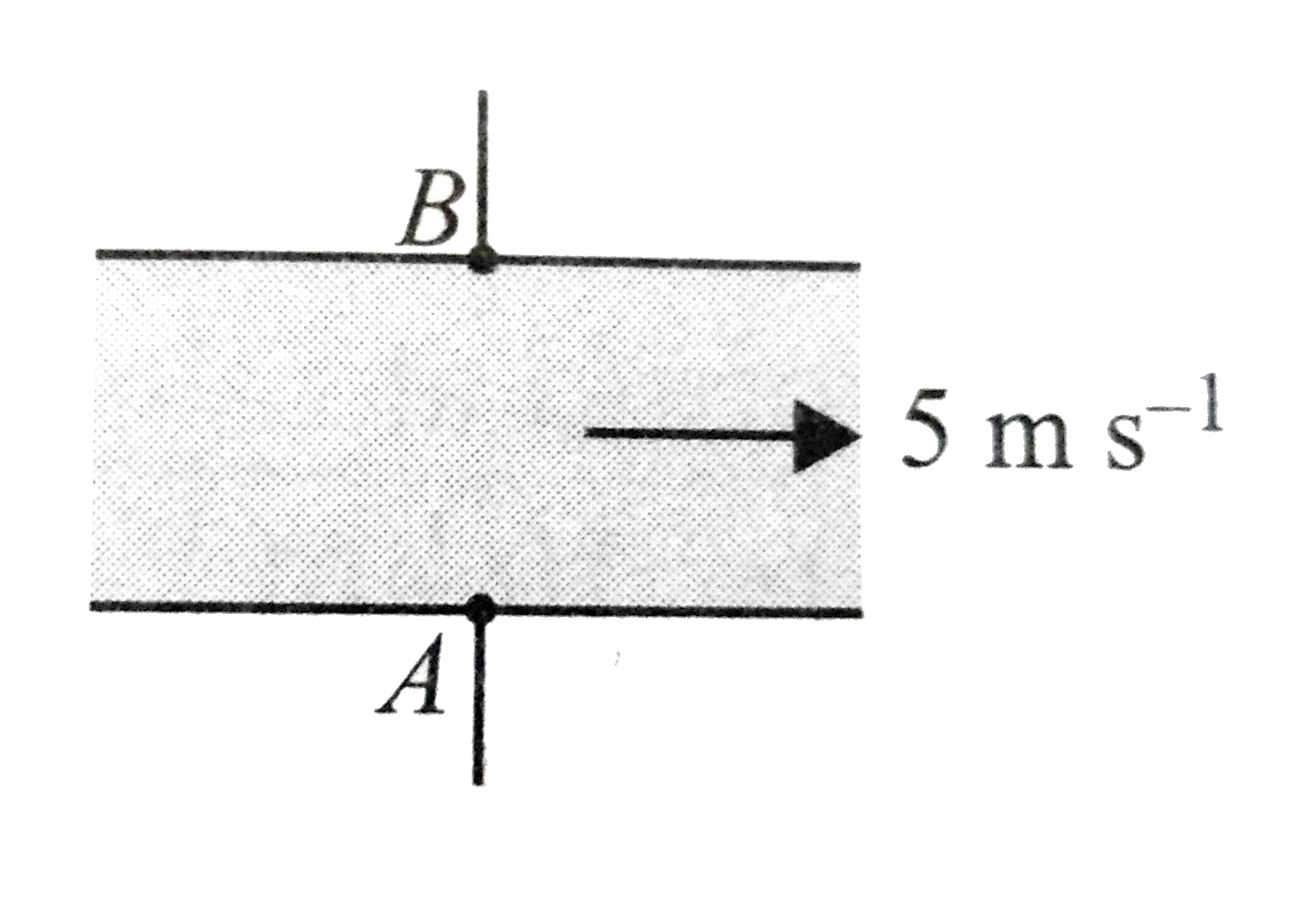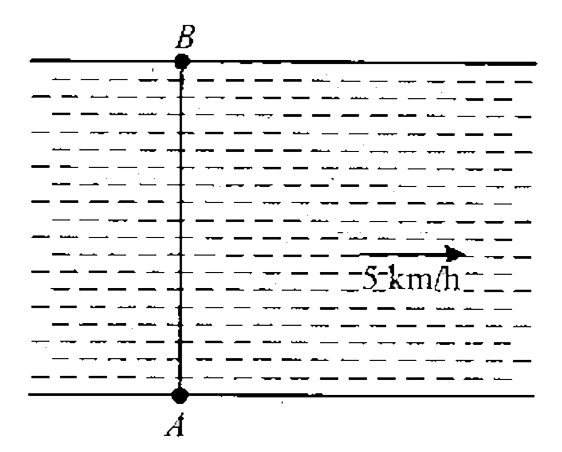A river 1 km wides is flowing at 3km⋅h−1 . A swimmer whose velocity in still water is 4km⋅h−1 can swim only for 15 minutes. In what direction should he swim in order to reach the opposite bank in those 15 minutes? What total distance will he swim ?
The correct Answer is:at right angle to the flow of water ; 1.25 km
Topper's Solved these Questions
- VECTORBook:CHHAYA PUBLICATIONChapter:VECTORExercise:PROBLEM SET-II
Explore 34 Videos
- VECTORBook:CHHAYA PUBLICATIONChapter:VECTORExercise:PROBLEM SET-II (Hot Numerical Problems)
Explore 24 Videos
- VECTORBook:CHHAYA PUBLICATIONChapter:VECTORExercise:EXERCISE (Short Answer Type Questions-II)
Explore 2 Videos
- THERMOMETRYBook:CHHAYA PUBLICATIONChapter:THERMOMETRYExercise:EXAMINATION ARCHIEVE - WBJEE
Explore 1 Video
- VISCOSITY AND SURFACE TENSIONBook:CHHAYA PUBLICATIONChapter:VISCOSITY AND SURFACE TENSIONExercise:EXERCISE (CBSE SCANNER)
Explore 9 Videos
Similar Questions
A river is flowing from west to east with a speed 5 m s−1. A swimmer can swim in still water at a speed of 10 m s−1 .
If he wants to start from point A on south bank and reach opposite point B on north bank. In what direction direction should he swim ?

View SolutionA river is flowing due east with a speed 3ms−1 A swimmer can swim in still water at a speed of 4ms−1 If swimmer starts swimming due north what will be his resultant velocity (magnitude and direction )?
View Solution
Knowledge Check
A river is flowing due east with a speed 3ms−1. A swimmer can swim in still water at a speed of 4ms−1. If swimmer starts swimming due north, then the resultant velocity of the swimmer is
A3ms−1B5ms−1C7ms−1D2ms−1Inthe figure shown a river of width 4km is flowing with the speed of 5km/h. A swimmer whose swimming speed relative to the water is 4km/h, starts swimming from a points on a bank. On the other bank 5 is a point which is directly opposite to A. What minimum distance (in km) the swimmer will have to walk on the other bank to reach the point B.
 A2B3C4D5
A2B3C4D5
A river 500m wide flows at a rate at a rate of 4kmh−1. A swimmer who can swim at 8kmh−1. In still water, wishes to cross the river straight. (i) Along what direction must he strike? (ii) What should be his resultant velocity. (iii) What is the time of crossing the river?
View SolutionA man can swim at the rate of 5km/h in still water. A river 1km wide flows at the rate of 3kmh−1. A swimmer wishes to swim across the river directly opposite to the starting point.
(a) Along what direction must the man swim ?
(b) What should be his resultant velocity ?
( c) How much time will he take to cross the river ?
View Solution2 km wide river flowing with a rate of 5 km/hr. A man can swim in the still water with10 km/hr. He wants to cross the river along shortest path find
In which direction person should be swim
View SolutionA man can swim at the rate of 5kmh−1 in still water. A 1−km wide river flows at the rate of 3kmh−1 The man wishes to swim across the river directly opposite to the starting point.
(a) Along what direction must the man swim ?
(b) What should be his resultant velocity ?
( c) How much time will he take to cross the river ?
View SolutionA river is flowing from west to east with a speed 5m/s. A swimmer can swim in still water at a speed of 10m/s .
If he wants to start from point A on south bank and reach opposite point B on north bank. In what direction direction should he swim ?

View SolutionA river is flowing from the west to the east at 5m/min. A swimmer on the southerm bank can swim at 10 m/min in still water. In what direction should he swim if (i) He wishes to cross the river in minimum time (ii) He wishes to cross te river through shortest route
View Solution
